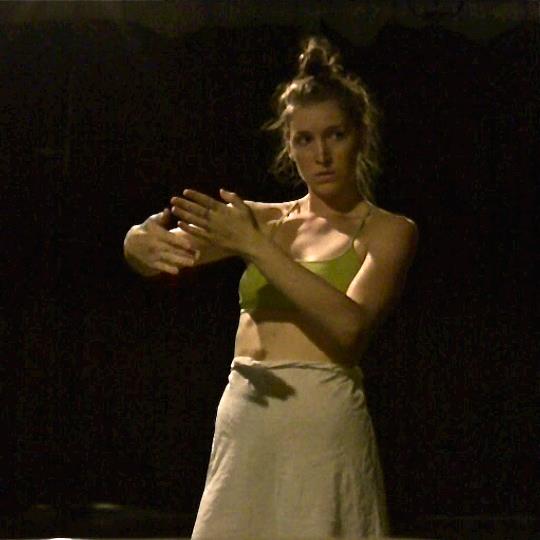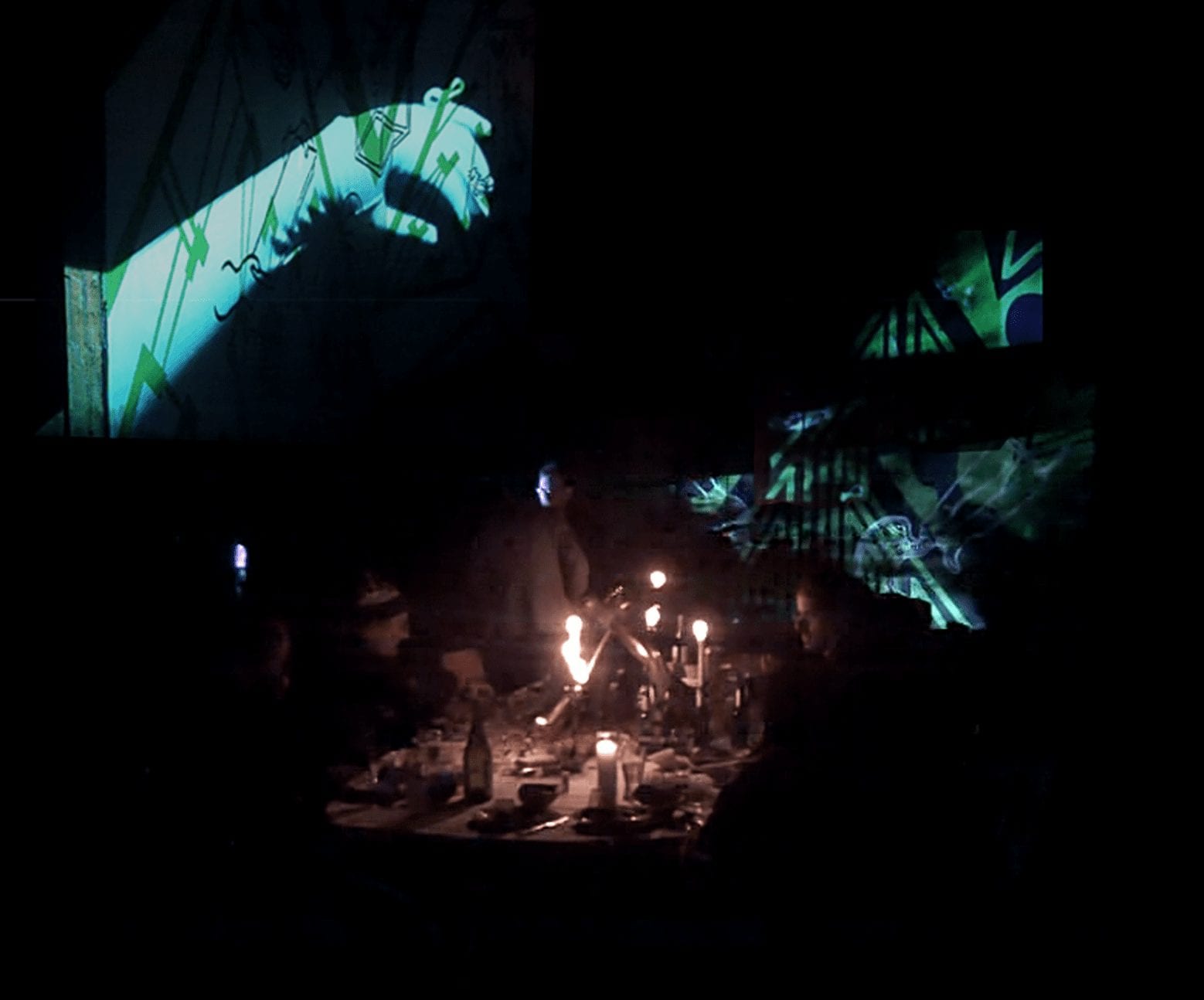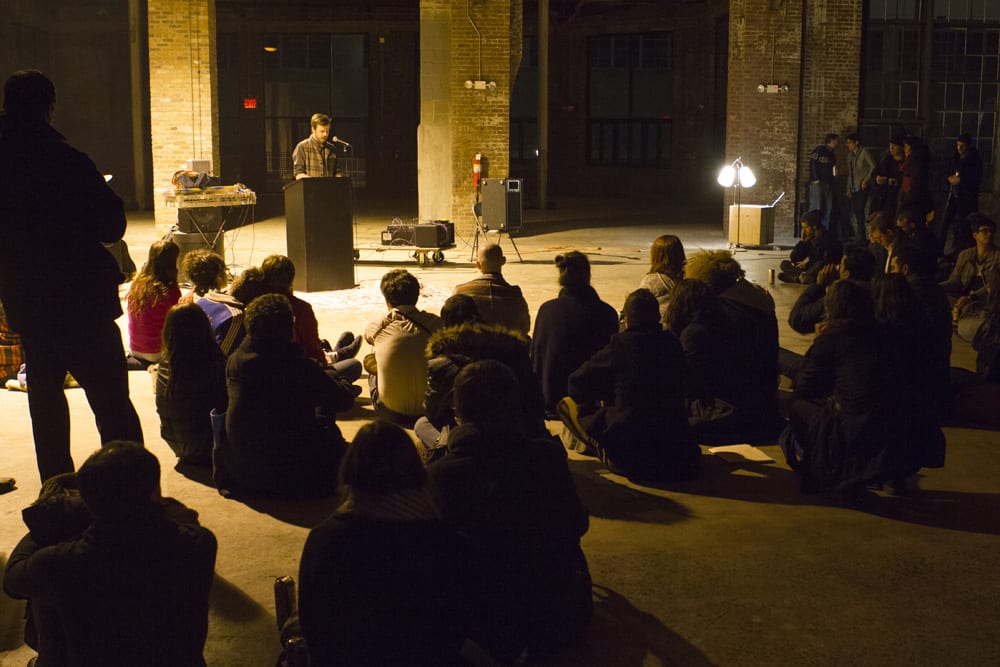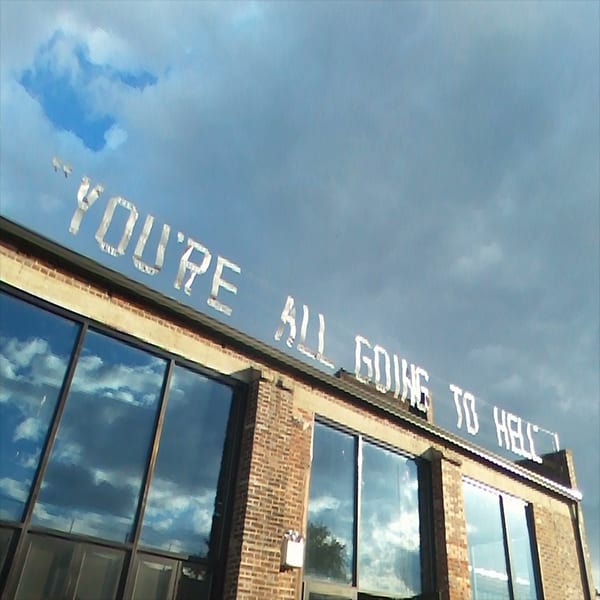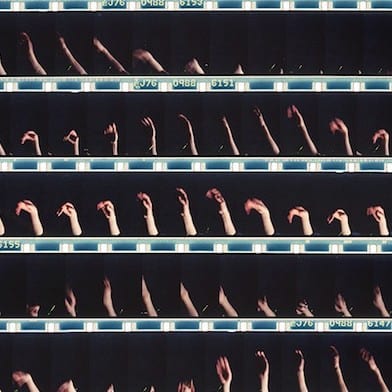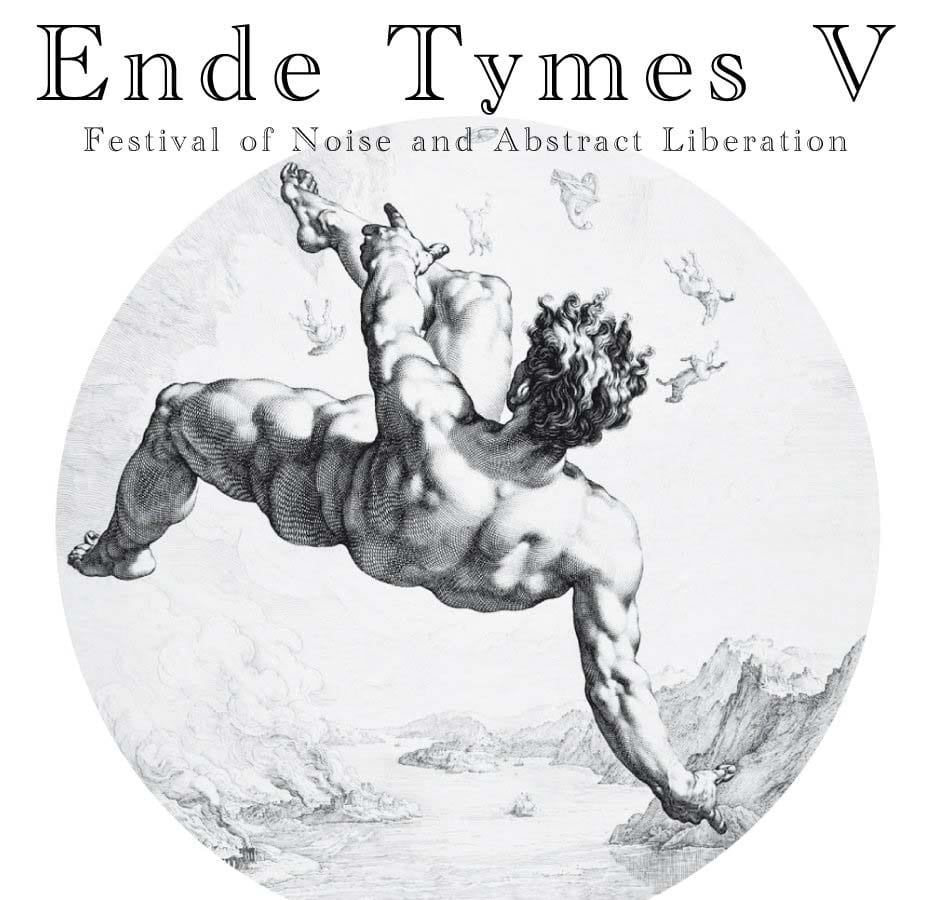First Person View is an art show for drones. As drones become popular as a consumer toy and a tool for videography among civilians, the human relationship to the drone’s perspective is increasingly a subject of interest. This exhibition incorporates the drone’s point of view as a new way of looking—a scale and orientation in which the body is no longer the limiting force. Originally conceived of as a drone obstacle course, this exhibition presents artworks not so much as piloting obstacles, but visual targets. Visitors are challenged to use the drone’s real-time vision to navigate throughout the space and encounter a circuit of 8 artworks organized by levels of difficulty. As the most comprehensive viewer of the exhibition, the drone-cam captures images that will be continuously printed and amassed as a counterpart to the show.
Open flying hours Saturday and Sunday 2-6pm.
Works by:
Dina Kelberman
Lyoudmila Milanova
Scott Gelber
Matej Vakula
Jeff DeGolier
Corey Escoto (above)
Kempton Van Hoff
E. Adam Attia and Leo Gibbs
Cara Francis: REMOTE, drone performance series with original sound composed by Christopher Loar
-August 15- Seduction/Nuisance
-August 29- Impersonation/Escape
-September 12- Tactile/Aftermath (for Internet Yami-Ichi)
LEVEL 1:
Lyoudmila Milanova: New Narratives
Milanova’s landscape installation in miniature is designed for a small aircraft. The aerial view captured by drone vision is projected on the adjoining vertical face of the room, creating a surreal and disorienting tableau. When Milanova learned that the Berlin police use drones to simulate the escape routes of criminals, she began to consider the drone’s perspective as potentially fugitive, a perspective imbued with fear, danger, and a poetics of vulnerability and suspense.
Dina Kelberman: Sleep Video
In this horizontal projection, Kelberman shuffles and superimposes homemade Youtube videos of people lighting smoke bombs. Like flying drones for fun, these civilians use devices developed for the military as home recreation, making sure to document their view to share with others online. The colorful plumes of smoke are so soothing that the artist uses the video to help with insomnia caused by staring at the computer screen. As an artist who works with vast caches of images from the internet, Kelberman’s visual fatigue is tempered by the hazy mists clouding so many suburban backyards, dispersing endlessly across the internet and the atmosphere.
LEVEL 2:
Scott Gelber: UVHS
Uncanny Valley High School, or UVHS, is the first in a series of installations that imagine locations in the fictional town of Uncanny Valley, named for the drastic dip in empathy that occurs when nonhuman figures appear uncomfortably lifelike. The failed suburban utopia of his UVHS basketball court riffs on classic high school tropes, transforming them into a nightmarish trip through psychedelic space, projected in three dimensions. The basketball hoop can stand in for a larger conversation about sports and the current use of drones as recreation.
Matej Vakula: Impossible Structure
This sculpture appears to shift dramatically in form when seen from different angles. Inspired by mathematical quandaries, it is part of a series incorporating the simple form of two vertical rectangles. Simultaneously so innocently geometrical and so symbolically loaded, the twin tower form has potent and difficult connotations sometimes identified with drones. In the post-9/11 era, drones have entered the popular lexicon due to a major increase in anti-terrorist military strikes, as well as an overall atmosphere of heightened domestic security.
LEVEL 3:
Jeff DeGolier: Untitled (4 x 8 Paradise)
DeGolier’s chill zone is high above ground level, with a beach chair and a modified car stereo boom box hanging from the rafters. This “off duty” relaxation area is protected from the prying eyes of those below, but at a perfect elevation for drones. In an age where an Amazon drone may soon deliver a beach chair to wherever you are, the desire for efficiency and immediate gratification is ever more at odds with issues of privacy and surveillance.
Corey Escoto: “You’re all going to hell”
Like a voice coming down from above, this text piece is installed on the roof ledge. The conceit of soaring elevation as linked to the sublime is also cheekily thrown into question with the notion of afterlife underground. Taking a potshot at the political figures who give drones authority, the voice of the artist is god-like, but Escoto is also matter-of-fact. He just likes the idea of saying this phrase “to the free and fast young nyorkers that come from all over often to escape their conservative upbringing.”
LEVEL 4:
Kempton Van Hoff: Drone DNA
The drone’s mechanized movements make entering this passageway a challenge. Like a bionic ribcage or a loop of military-grade seaweed, this tunnel of lightweight interlocking fibers is designed for pilots to test their precision. Van Hoff built this form using a resilient geo-composite material he developed for durable construction, here adorned with ones and zeros in reference to the drone’s binary code.
E. Adam Attia and Leo Gibbs: Smoke and Mirrors
Images of a classic fifties American household cover the exterior of a large suspended cube. Inside, reflective mirrors and smoke obscure a miniature war scene, making a visual pun about deception. Hobby shop tanks and G.I. Joes are affixed to a topographical landscape, simulating a battlefield with war-related game pieces. Formerly a geospatial analyst in the US Army stationed in Iraq, Attia witnessed the reality of Unmanned Arial Vehicles used to track and kill suspected terrorists along with unsuspecting citizens.
Cara Francis: REMOTE, live performance
Francis has been working with drones in performance art in order to investigate how technology enables acts of love and violence from increasing distances. She facilitates interactions between members of the public and a drone, who asks them questions while hovering above. Its deep voice asks emotional questions, taking on a nearly human presence, yet retaining an aggressive edge. Viewers share their thoughts about surveillance, privacy, fear and ethics, while interacting in an often humorous bodily way with the physical fact of the drone.
